
How to Use Adafruit SPI Non-Volatile FRAM 8KB: Examples, Pinouts, and Specs
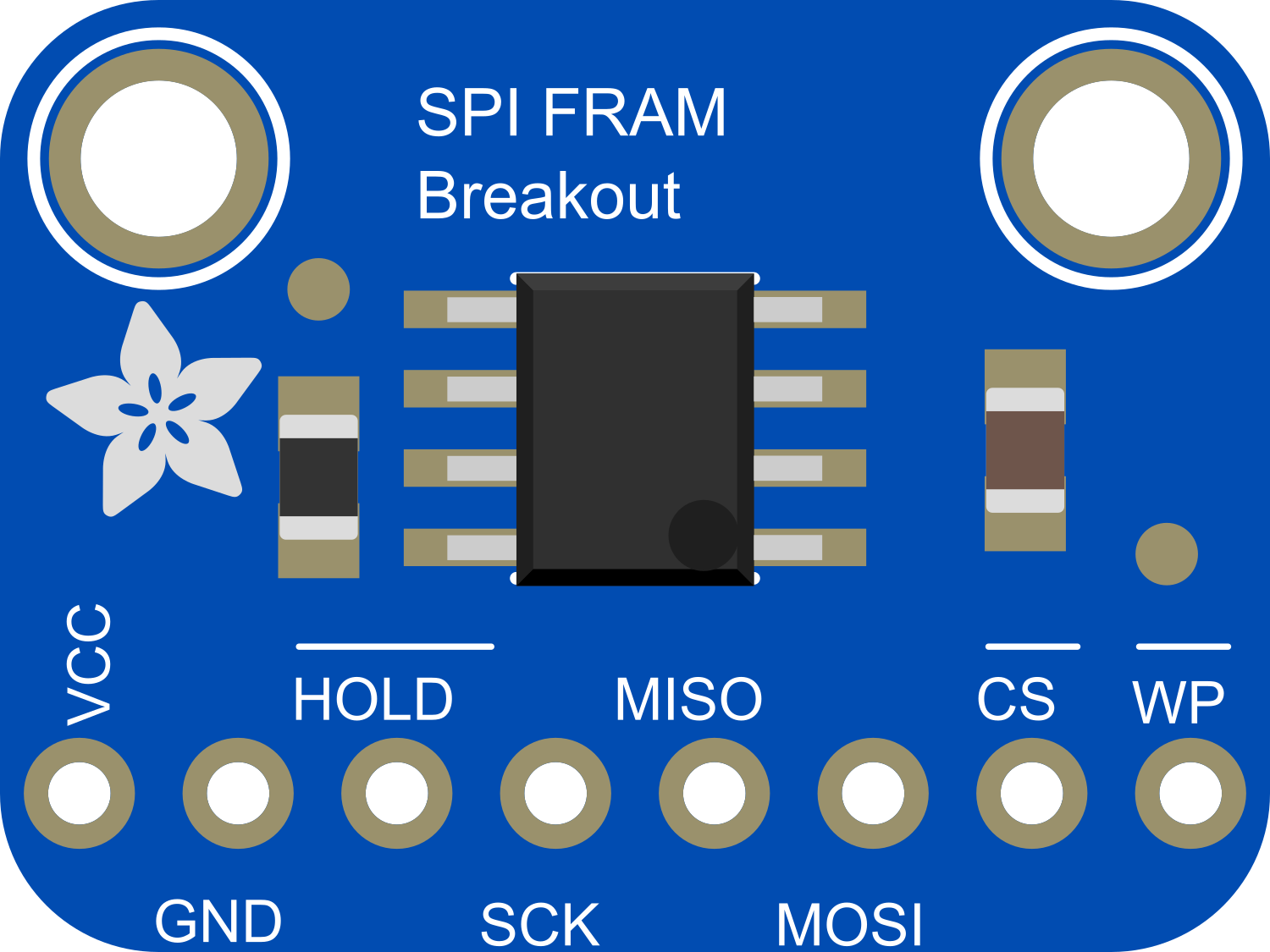
 Design with Adafruit SPI Non-Volatile FRAM 8KB in Cirkit Designer
Design with Adafruit SPI Non-Volatile FRAM 8KB in Cirkit DesignerIntroduction
The Adafruit SPI Non-Volatile FRAM 8KB is a high-performance, ferroelectric random access memory (FRAM) module that provides robust, non-volatile data storage. Unlike traditional non-volatile memories like EEPROM or Flash, FRAM offers faster write speeds and a much higher endurance for write cycles. This makes it ideal for applications that require frequent or rapid data logging or updates, such as wear-leveling tasks, data caching, and real-time data collection. The module communicates with microcontrollers via the Serial Peripheral Interface (SPI) protocol.
Explore Projects Built with Adafruit SPI Non-Volatile FRAM 8KB
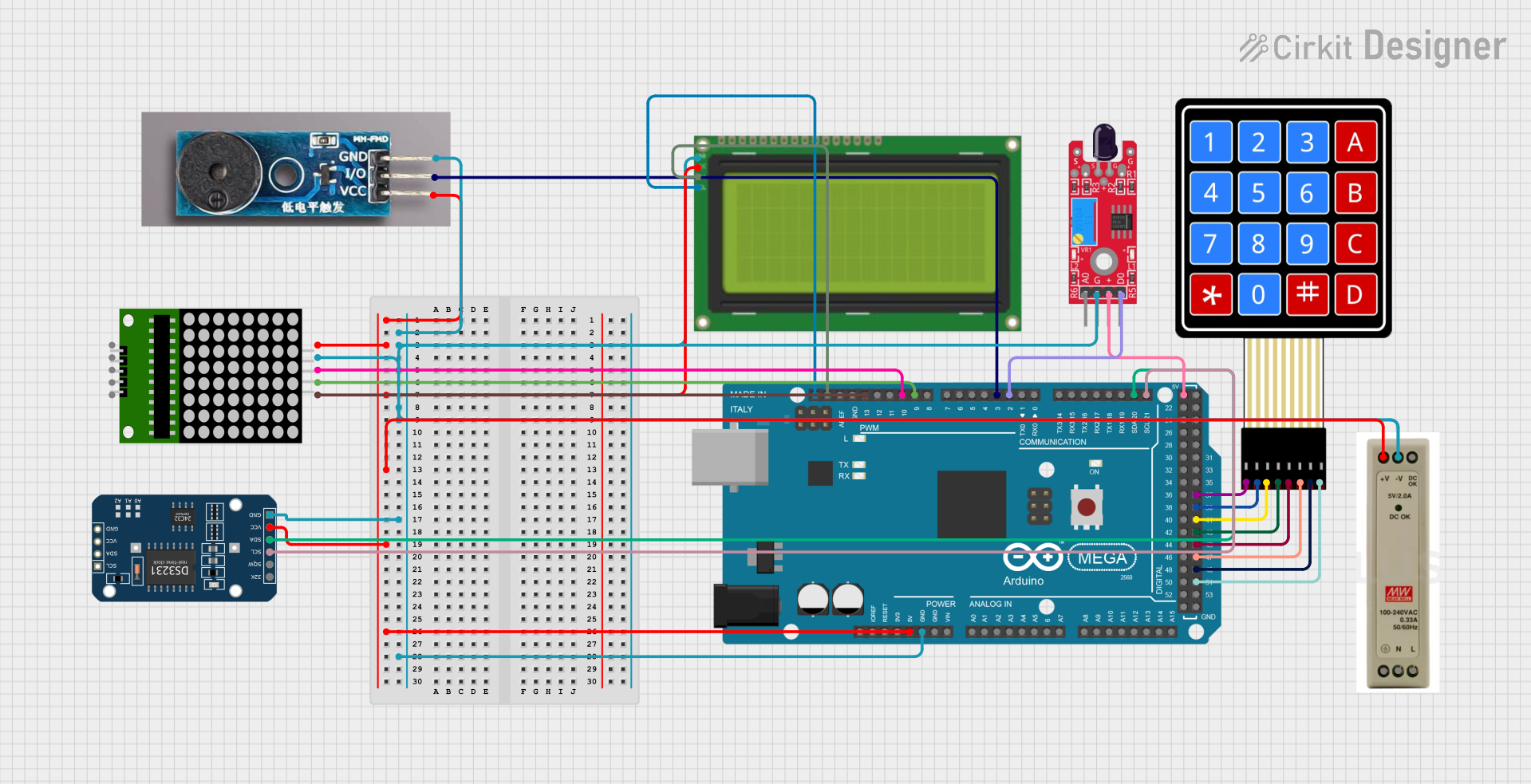
 Open Project in Cirkit Designer
Open Project in Cirkit Designer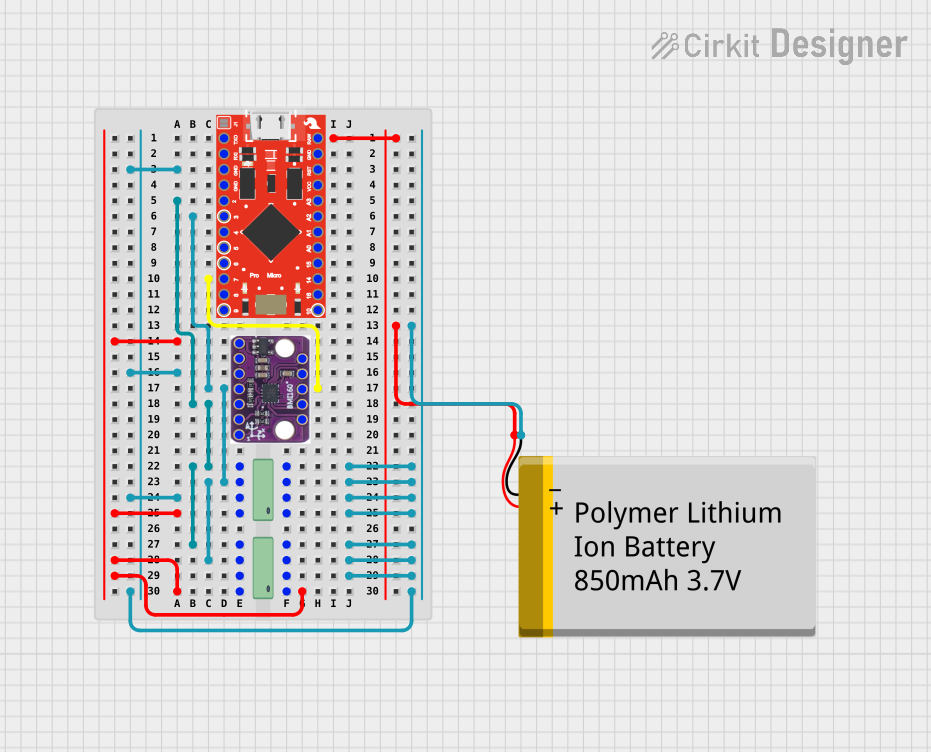
 Open Project in Cirkit Designer
Open Project in Cirkit Designer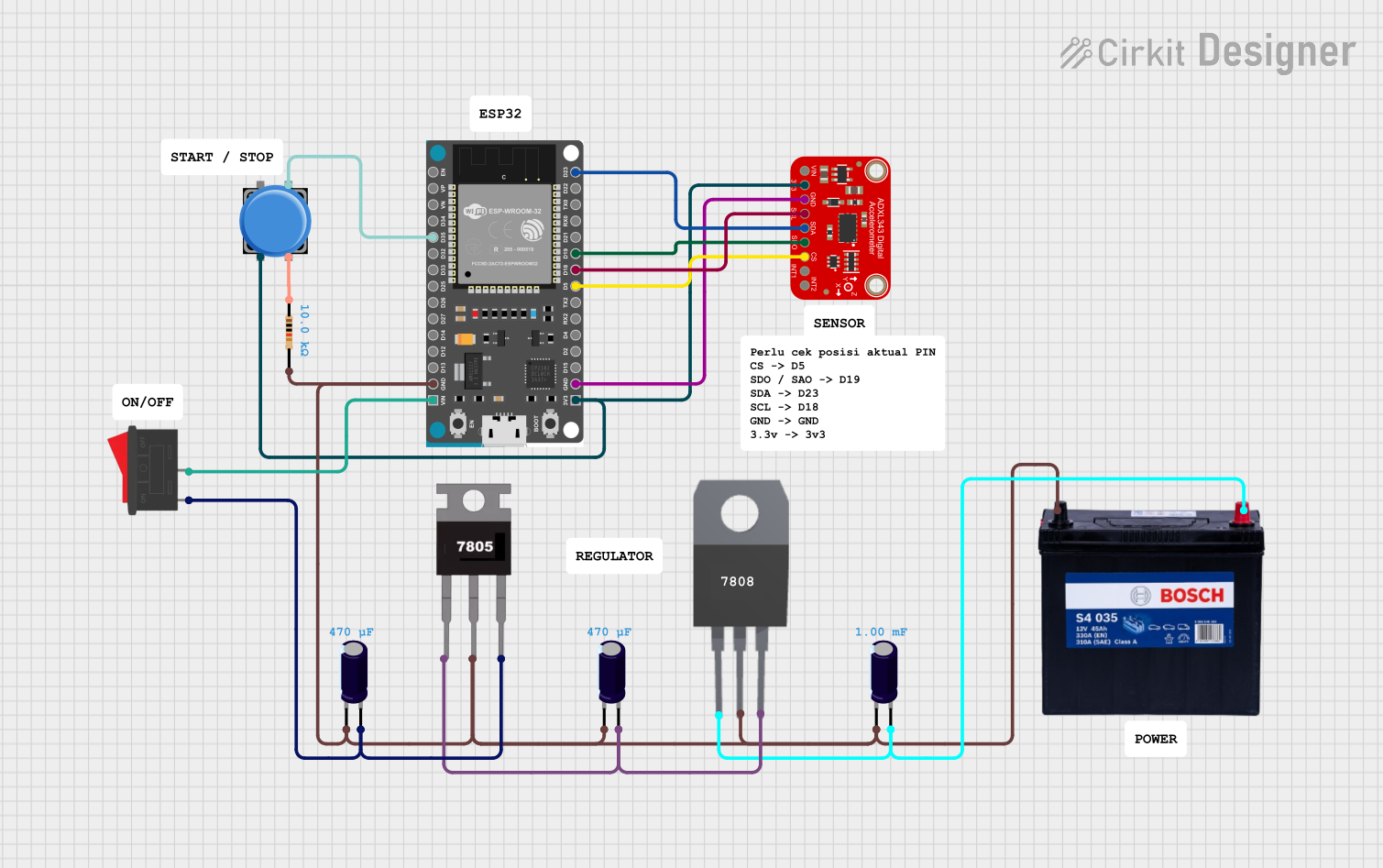
 Open Project in Cirkit Designer
Open Project in Cirkit Designer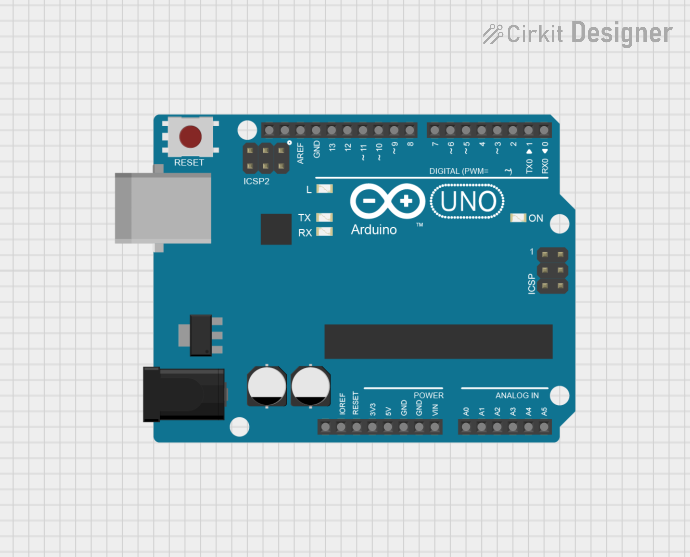
 Open Project in Cirkit Designer
Open Project in Cirkit DesignerExplore Projects Built with Adafruit SPI Non-Volatile FRAM 8KB

 Open Project in Cirkit Designer
Open Project in Cirkit Designer
 Open Project in Cirkit Designer
Open Project in Cirkit Designer
 Open Project in Cirkit Designer
Open Project in Cirkit Designer
 Open Project in Cirkit Designer
Open Project in Cirkit DesignerCommon Applications and Use Cases
- Data logging systems
- Real-time data collection
- Industrial control systems
- Gaming and entertainment devices
- Wearable electronics
- IoT devices requiring frequent updates
Technical Specifications
Key Technical Details
- Voltage: 3.3V to 5V logic and power
- Current: 0.3 mA (typical standby), 3 mA (maximum operating)
- Power Ratings: 15 mW (maximum operating power)
- Memory Size: 8 KBytes (64 Kbits)
- Write Endurance: 10^14 write cycles
- Data Retention: 10 years
- Operating Temperature Range: -40°C to +85°C
Pin Configuration and Descriptions
| Pin Number | Name | Description |
|---|---|---|
| 1 | CS | Chip Select, active low |
| 2 | DI | Data In, SPI MOSI (Master Out Slave In) |
| 3 | DO | Data Out, SPI MISO (Master In Slave Out) |
| 4 | SCK | Serial Clock, SPI Clock |
| 5 | Vcc | Power supply (3.3V to 5V) |
| 6 | GND | Ground |
Usage Instructions
How to Use the Component in a Circuit
Powering the FRAM: Connect the Vcc pin to a 3.3V or 5V power supply, and the GND pin to the ground.
SPI Communication: Connect the CS, DI, DO, and SCK pins to the corresponding SPI pins on your microcontroller. For Arduino UNO, the connections are typically as follows:
- CS to digital pin 10 (or any other digital pin if you change the pin number in your code)
- DI (MOSI) to digital pin 11
- DO (MISO) to digital pin 12
- SCK to digital pin 13
Library Installation: Install the Adafruit FRAM SPI library via the Arduino Library Manager or download it from the Adafruit GitHub repository.
Initialization: In your code, initialize the FRAM module using the library's functions. Check for successful initialization before proceeding with read/write operations.
Important Considerations and Best Practices
- Always ensure that the power supply voltage matches the FRAM module's specifications.
- Use pull-up resistors on the SPI lines if you encounter communication issues.
- Avoid exposing the FRAM to temperatures outside its operating range.
- Minimize the length of the SPI connections to reduce potential electromagnetic interference.
Example Code for Arduino UNO
#include <Wire.h>
#include <Adafruit_FRAM_SPI.h>
// Pin definitions
#define CS_PIN 10
// Create an FRAM_SPI instance
Adafruit_FRAM_SPI fram = Adafruit_FRAM_SPI(CS_PIN);
void setup() {
Serial.begin(9600);
while (!Serial) {
; // Wait for serial port to connect
}
// Initialize SPI FRAM
if (fram.begin()) {
Serial.println("Found SPI FRAM");
} else {
Serial.println("No SPI FRAM found ... check your connections");
while (1);
}
// Write example data to FRAM
uint8_t testdata = 42;
fram.writeEnable(true);
fram.write8(0, testdata);
fram.writeEnable(false);
// Read back the data
uint8_t result = fram.read8(0);
Serial.print("Read: 0x"); Serial.println(result, HEX);
}
void loop() {
// Nothing to do here
}
Troubleshooting and FAQs
Common Issues Users Might Face
- FRAM not detected: Ensure that all SPI connections are secure and correct. Check that the correct CS pin is defined in your code.
- Incorrect data read/write: Verify that the write enable function is called before writing to the FRAM. Also, ensure that the power supply is stable and within the specified range.
- Communication errors: If you're experiencing sporadic communication, consider adding pull-up resistors to the SPI lines or shortening the connection wires.
Solutions and Tips for Troubleshooting
- Double-check wiring against the pin configuration table.
- Use the example code provided to test basic functionality.
- Consult the Adafruit FRAM SPI library documentation for advanced functions and troubleshooting tips.
FAQs
Q: Can I use this FRAM with a 5V microcontroller? A: Yes, the Adafruit SPI Non-Volatile FRAM 8KB is 5V tolerant on the SPI pins.
Q: How many write cycles can the FRAM handle? A: The FRAM can handle up to 10^14 write cycles, which is significantly higher than EEPROM or Flash.
Q: Do I need to perform any special operations before powering down the system? A: No, FRAM retains data without any special power-down sequence.
Q: Is it possible to use multiple FRAM modules on the same SPI bus? A: Yes, you can use multiple FRAM modules on the same SPI bus by assigning different CS pins for each module.